Not being able to access a particular website can be a frustrating experience, especially when you’re faced with an error message you don’t understand. For example, one common issue you might encounter when browsing the web is the ‘ERR_SPDY_PROTOCOL_ERROR’.
While this message may at first appear intimidatingly technical and complicated, it’s actually pretty simple. Understanding what the error means can make it much easier to solve. Once you know what you’re dealing with, there are a few quick techniques you can use to handle it.
In this post, we’ll explain what the SPDY protocol in Google Chrome is, as well as what the ERR_SPDY_PROTOCOL_ERROR means. Then we’ll explore five methods you can use to fix that error.
Let’s get started!
An Introduction to SPDY in Google Chrome
Before we discuss what the ERR_SPDY_PROTOCOL_ERROR message means and how to resolve it, it helps to understand what SPDY is in the first place. In a nutshell, SPDY is a Google Chrome networking protocol.
SPDY was created to help strengthen the security of HTTP-enabled web pages. HTTP is also a web protocol, which enables communication and connectivity between browsers and servers. The ‘s’ in SPDY is short for ‘speedy’, and reflects that the protocol is designed to help increase web page loading times and reduce latency.
Some additional benefits of SPDY include:
- Lower bandwidth usage
- Improved performance
- Better User Experience (UX)
SPDY modifies web traffic and data after it leaves the server, while optimizing bandwidth usage in the process. The result can be a faster experience for users. It can also help solve some common problems associated with HTTP. For example, HTTP only retrieves one item at a time, but SPDY fetches multiple downloads at once.
Understanding the ERR_SPDY_PROTOCOL_ERROR in Chrome
Some of the error messages you come across while browsing the web indicate a problem with the site you’re trying to access. Other times, they’re indicative of an issue with the Operating System you’re using.
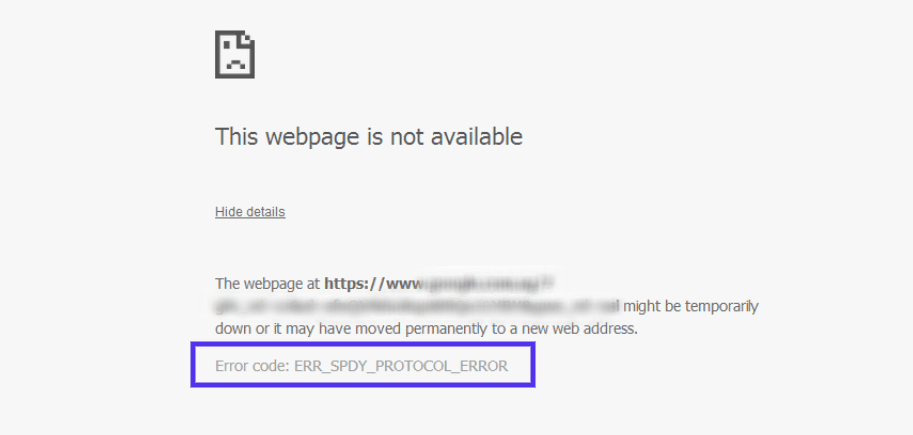
The good news is that this means there’s no issue with the website that triggered the error. It also narrows down the root of the problem, bringing you that much closer to the solution.
The bad news is that clearly there’s something wrong with the browser you’re using. This issue may interfere not just with the site you’re trying to use right now, but with others in the future.
As we mentioned earlier, the SPDY protocol is native to Chrome. Therefore, the ERR_SPDY_PROTOCOL_ERROR error is a Chrome-specific problem. It won’t occur in other browsers (although most other browsers have their own version of this error message).
When the ERR_SPDY_PROTOCOL_ERROR error appears indicating that the web page you’re trying to visit is unavailable, it means the SPDY protocol is no longer being supported in the browser. This most commonly happens if you’re trying to visit a Google-owned web page, such as Gmail or YouTube. However, it’s also possible for it to happen on unrelated websites.
How to Fix the ERR_SPDY_PROTOCOL_ERROR in Chrome (5 Methods)
Now that you know what the ERR_SPDY_PROTOCOL_ERROR message is, it’s time to learn how to fix it. Let’s take a look at five methods you can use.
Keep in mind that, because this is a Chrome-specific issue, you can only resolve it via Chrome. Trying to follow the below steps in another browser will be ineffective.
Method 1: Update and Restart Your Browser
The first step you should take to resolve the ERR_SPDY_PROTOCOL_ERROR message is to update and restart your browser. This might seem simple, but sometimes that’s really all it takes to make the irritating message go away and grant you access to the site you’re trying to visit.
To do so, simply exit out of your browser. Then re-open it and try to access the same website. Keep in mind that this is a quick-fix solution, and even if it resolves the error temporarily, you may want to look into the underlying issue by using some of the following methods as well.
If you’re still met with the ERR_SPDY_PROTOCOL_ERROR after restarting your browser, you may need to update it. To check whether your Chrome browser is up-to-date, click on the three vertical dots in the upper right-hand corner of your browser. Then go to Help > About Google Chrome:
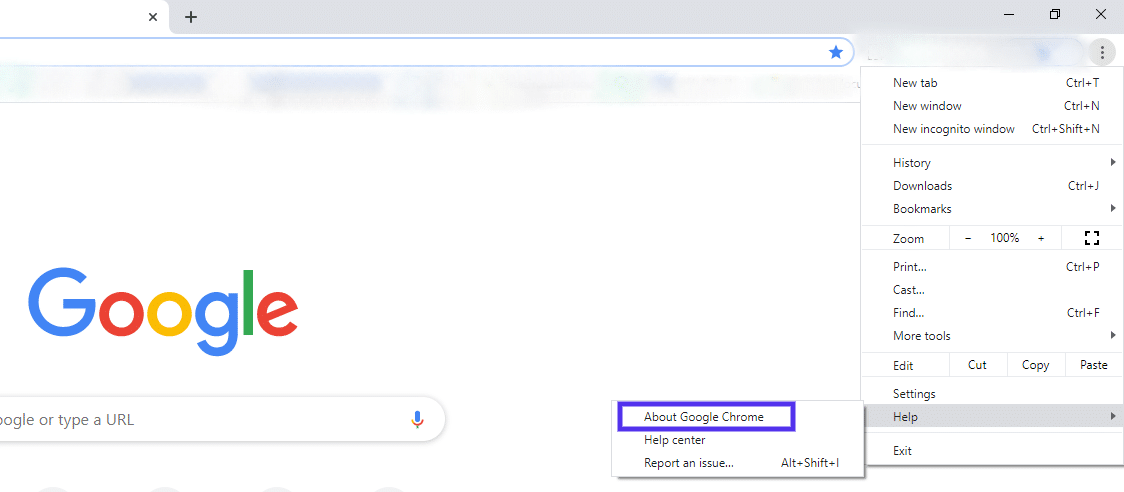
This will bring you to an ‘about’ page. It will tell you which version of Chrome you’re using, and will begin updating the browser if necessary:

Once the process is complete, click on the Relaunch button. Then, try visiting the website again to see if the issue is resolved. If not, you’ll want to proceed with the next method.
Method 2: Use Google Chrome’s Incognito Mode
Another simple yet often effective solution is to use your browser in ‘incognito’ mode. To do this, select your browser’s menu and click on New incognito window:
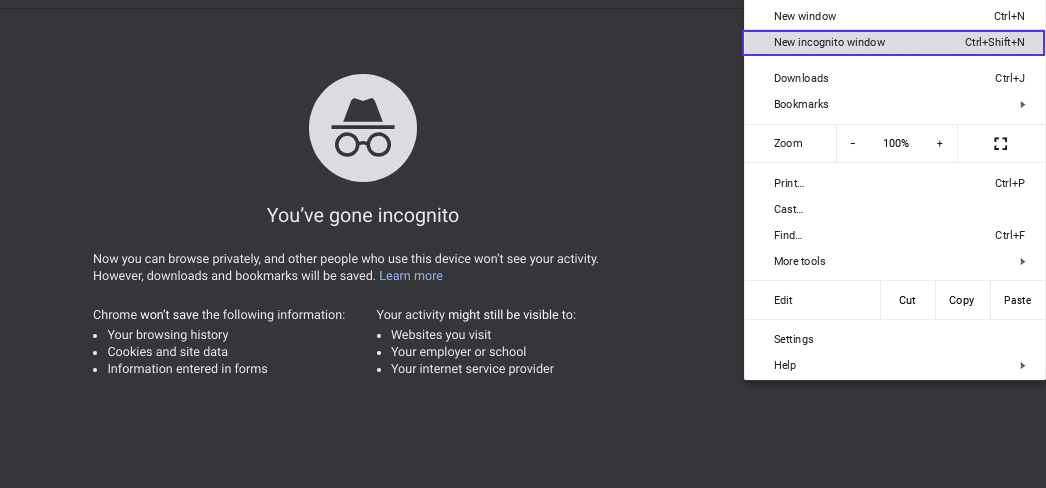
You can also use Ctrl+Shift+N on your keyboard to get here. Once incognito mode is activated, enter the URL of the site you’re trying to access into the search bar. If the issue is still occurring, move on to the next method.
If it’s resolved, on the other hand, you’ll be able to access the site. However, keep in mind that as with restarting your browser, this is just a temporary fix. So read on for a few potential ways to deal with the underlying cause of the error.
Method 3: Clear Your Browsing Cache
If even after restarting your browser and using incognito mode the web page is still unavailable, you can try cleaning out your browser’s cache. To do this, go to Settings in Chrome, and then scroll down and click on the Advanced link at the bottom of the page.
This will open a drop-down menu with more settings. Select Clear browsing data:
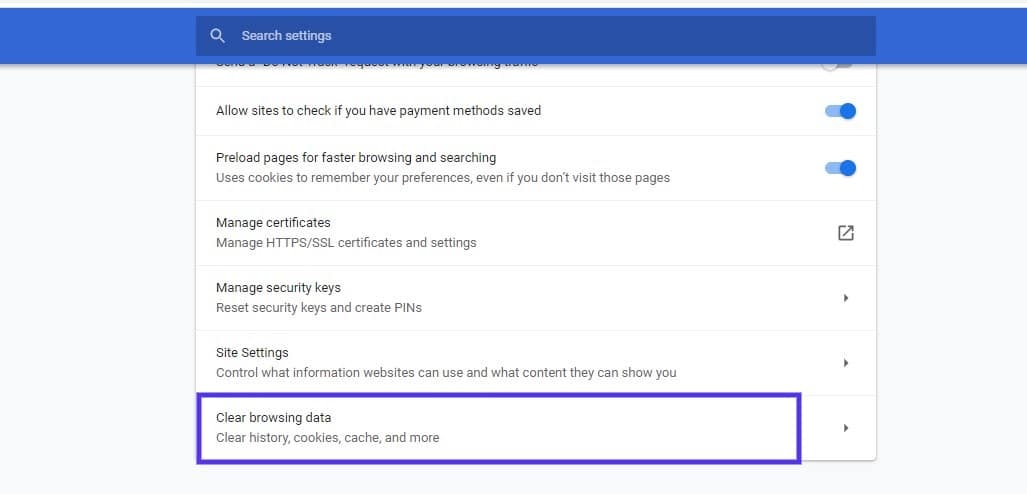
Next, you’ll be taken to a new window with two tabs: Basic and Advanced:
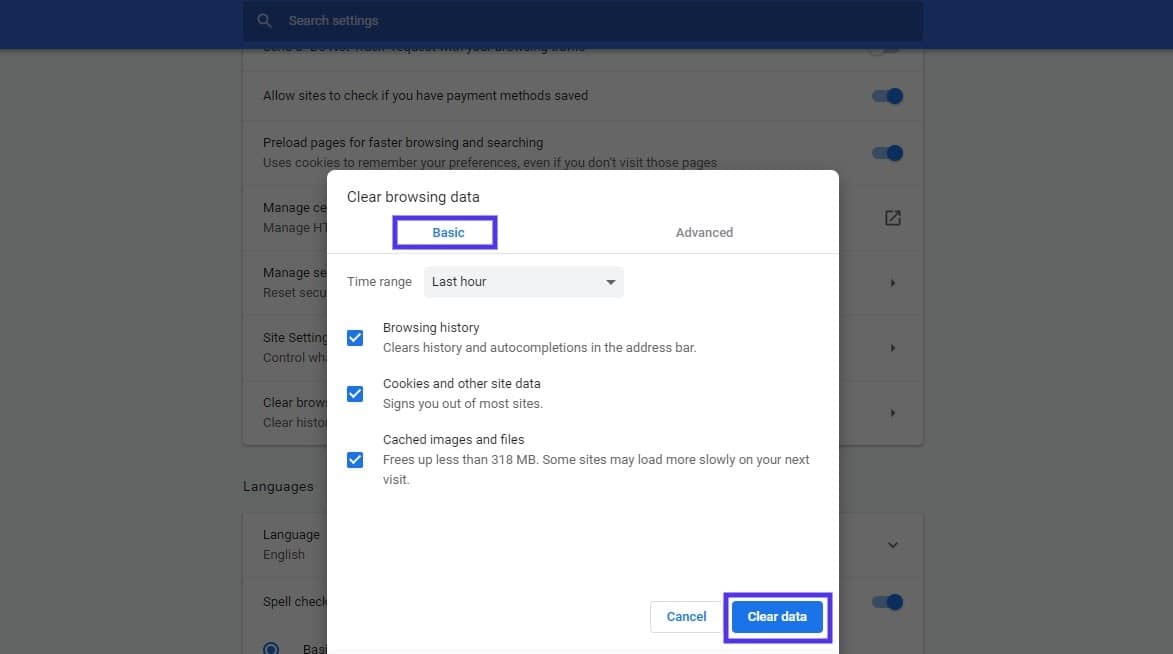
We recommend staying in the Basic tab. That way, the browser will retain your passwords, auto-fill data, and so on. Simply select Clear data and give the browser a few moments to work.
Once the process is complete, restart your browser and check to see if the error still appears.
Method 4: Flush the SPDY Pockets
Another solution that can resolve the ERR_SPDY_PROTOCOL_ERROR is flushing the ‘SPDY pockets’. To do this, open up your Chrome browser and type or copy and paste the following into the URL bar:
chrome://net-internals/#events&q=type:SPDY_SESSION%20is:active.
Next, hit the Enter key. That will bring you to a page that looks like this:

From there, click on Sockets in the left-hand navigation panel:
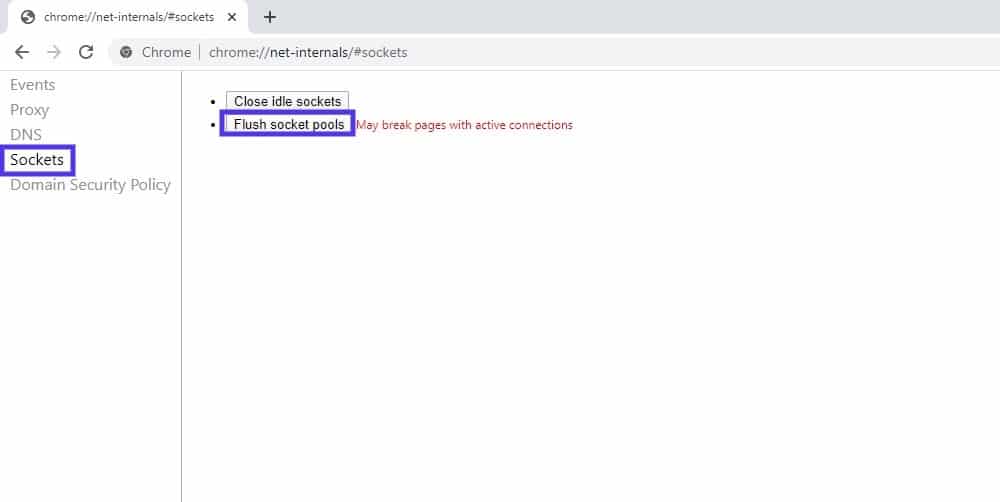
Once there, click on the Flush sockets pool button. Then try to visit the site that triggered the error, to see if the problem is resolved. If not, there’s one more method you can try.
Method 5: Clean the DNS and Renew the IP
If you’ve tried all of the above methods and you’re still seeing the ERR_SPDY_PROTOCOL_ERROR message, the issue may be with your Domain Name System (DNS). To flush your DNS, you’ll first want to open the command prompt.
In Windows, you can do this by using the Win + R keys, then typing “cmd” in the box that appears and hitting Enter. You can also open the Start menu, and type “Command Prompt” into the search bar. Next, select Run as administrator:
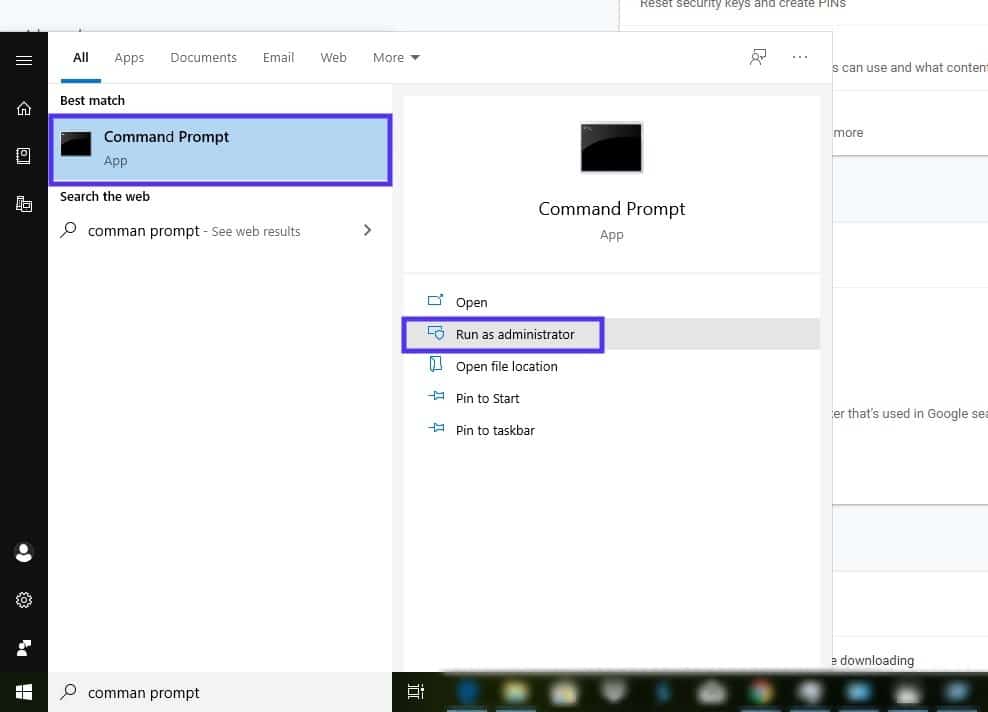
On a Mac, you can access the command prompt through Terminal. To do this, open Finder then click on Applications in the left panel:
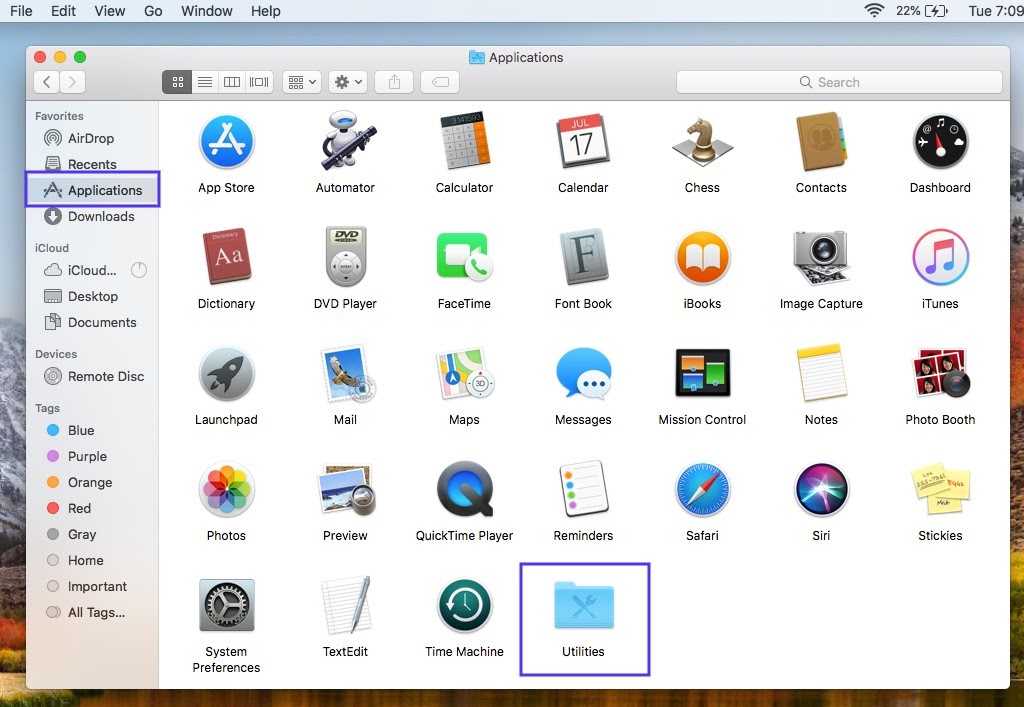
Next, scroll down and click on the Utilities folder followed by Terminal:
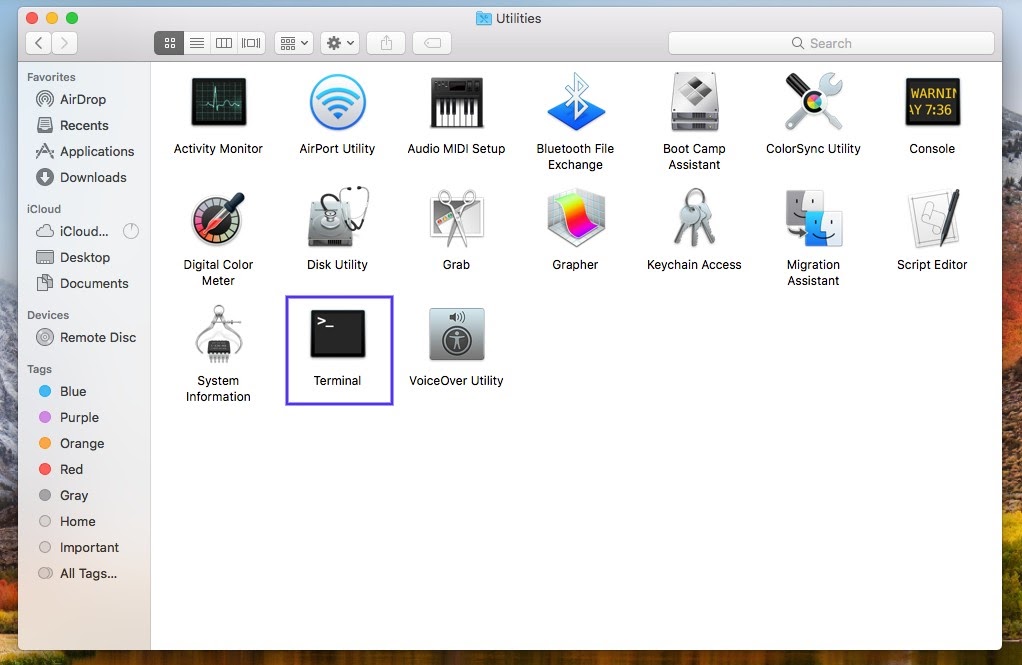
Visit our in-depth guide for all the details on how to flush your DNS cache based on your OS and browser.
Once this task is done, restart your browser and visit the site in question once more to verify that the problem has been resolved.
(Learn how to fix Chrome’s ERR_CACHE_MISS error).
Summary
Google Chrome is an extremely popular browser, with a whopping 73% of browser market share, and in most cases, it runs pretty smoothly. Once in a while, however, you might come across an ERR_SPDY_PROTOCOL_ERROR message preventing you from accessing a particular website.
While frustrating, this issue is resolvable without requiring a lot of technical know-how. Specifically, there are five methods you can use to resolve the Chrome ERR_SPDY_PROTOCOL_ERROR message:
- Updating and restarting your Google Chrome browser.
- Using Google Chrome’s incognito mode to access the site.
- Clearing your browser’s cache.
- Flushing the SPDY sockets of your Chrome browser.
- Cleaning your DNS cache and renewing the IP.


